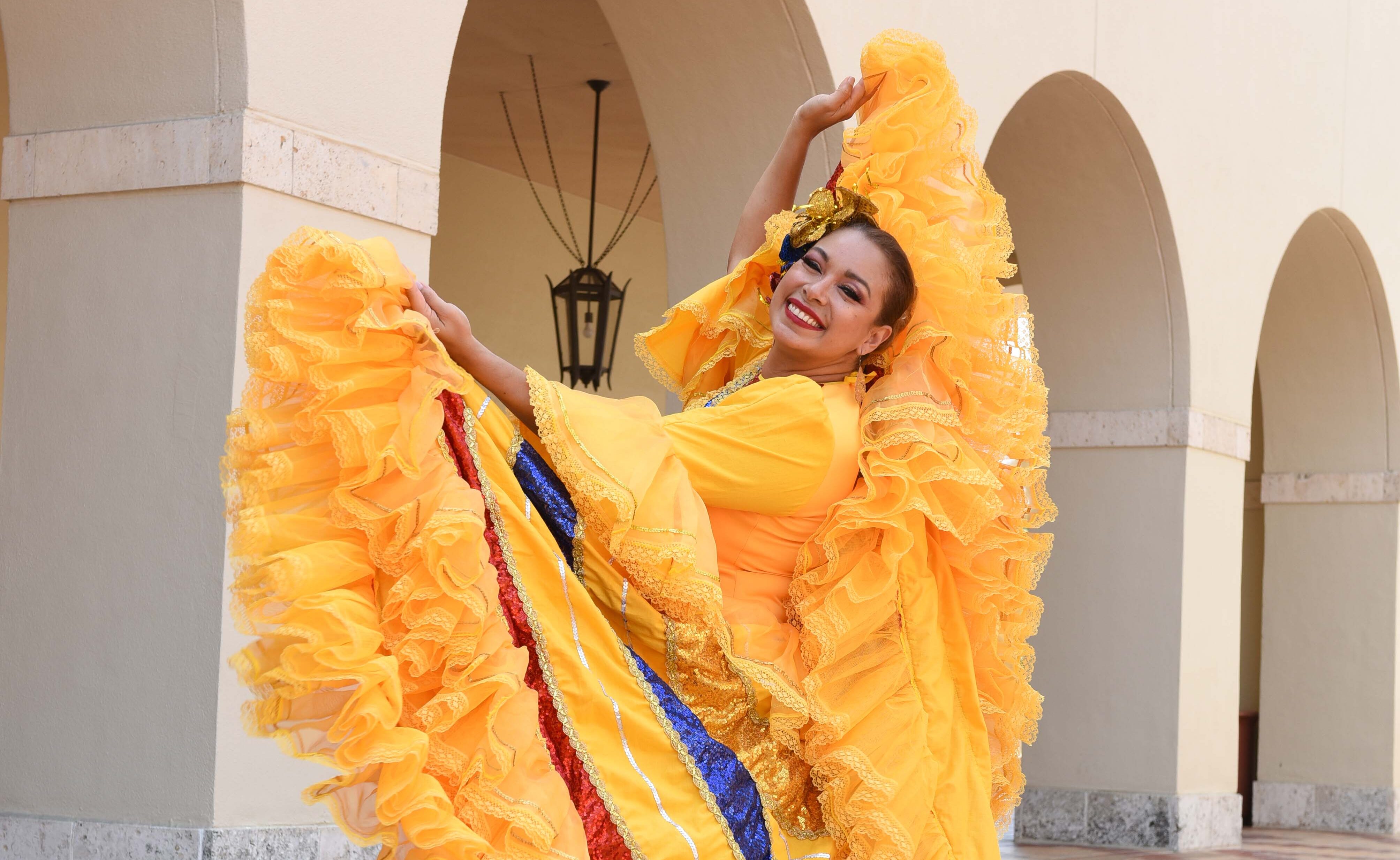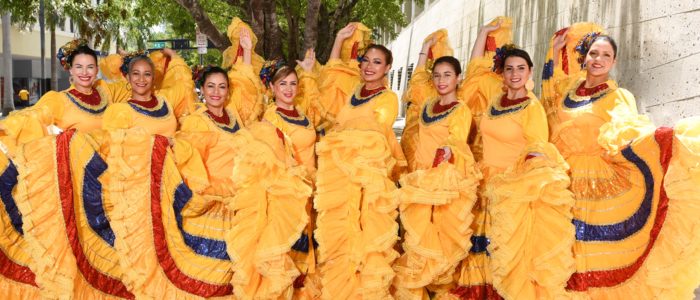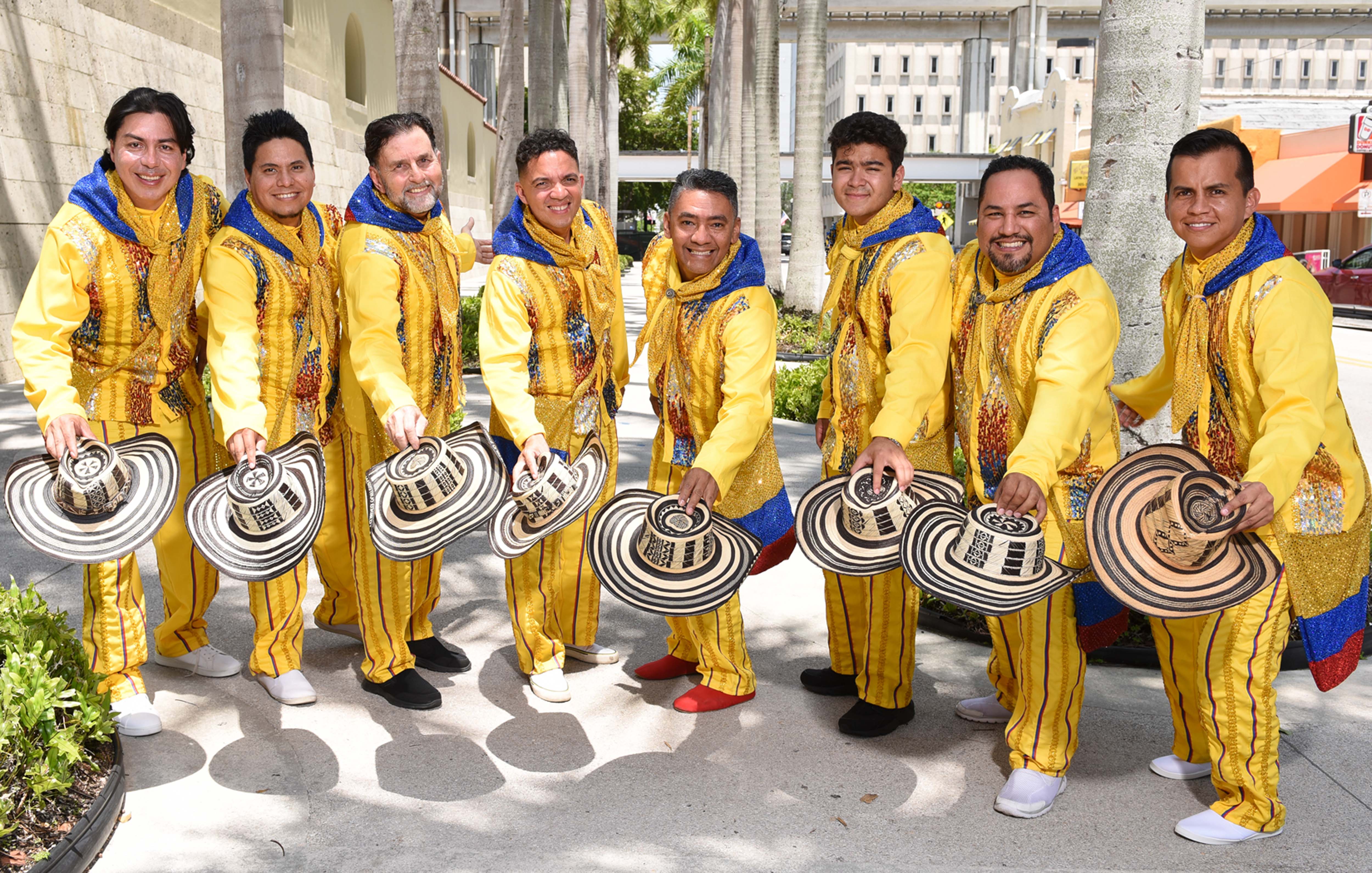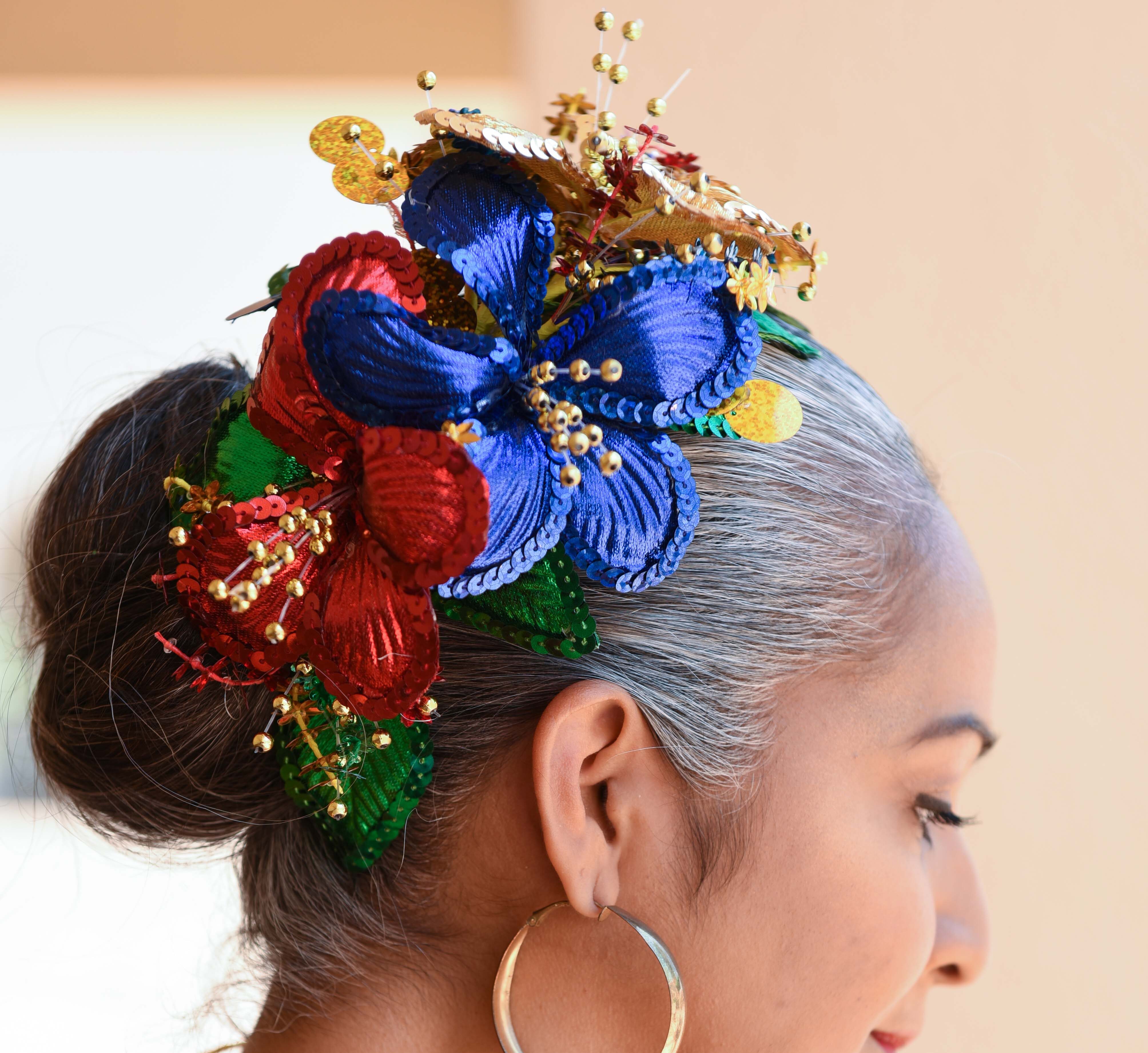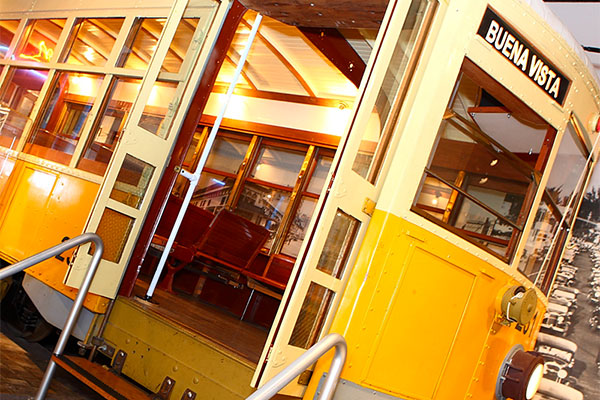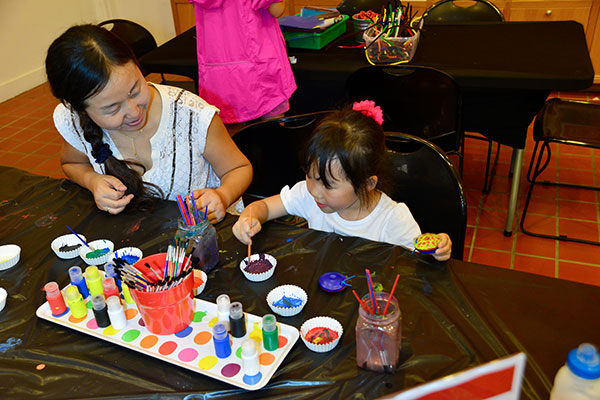Since 2008, music and dance ensemble Puerta de Oro de Colombia has showcased diverse folkloric traditions from Colombia’s distinct regions to audiences across South Florida. Composed of about 40 artists, the group offers interactive performances featuring vibrant traditional rhythms and dances such as cumbia, bambuco, currulao, and vallenato. Driven by their mission to break down cultural boundaries or “romper fronteras,” they preserve their cultural heritage and share their passion for Colombian folklore through television features, radio shows, and live performances.

More about Puerta de Oro de Colombia
The following is from an interview HistoryMiami Museum conducted with Rosmy Camargo, Founder of Puerta de Oro de Colombia.
1. What is your name and where are you from?
My name is Rosmy Camargo, and I am from Barranquilla, Colombia.
2. When and why did you move to Miami?
I moved to Miami in 2001 after living for a few years in the Northeast. Miami seemed to be the right place for me. I wanted to have the opportunity to call home a place with a wide cultural diversity. Miami’s proximity to Latin America, its sun, and its beautiful beaches made it irresistible. Moving here has been one of the best decisions I’ve ever made.
3. Tell me the story of how Puerta de Oro de Colombia began.
Puerta de Oro de Colombia was born in Hartford, CT in the year 2000. Then it was reborn and constituted formally in Miami in 2008. I started the first group in Hartford when some leaders from the city were looking for a representation of Colombian culture in a community festival. Years after moving to Miami, I felt the need to form a cultural group that allowed me to dance and partner with others. Over the years, in reality, this group has become like a second family for many of us. Today we are not only happy to display our cultural heritage, but also enjoy the fellowship that has been built throughout the past ten years.
4. What is the mission of Puerta de Oro de Colombia?
We are working towards the mission of “rompiendo fronteras,” meaning breaking borders. We want to prove that there are no geographical or personal barriers to show, with honor, our culture and its traditions.
5. Tell me about the music and dance traditions Puerta de Oro de Colombia practices.
Puerta de Oro de Colombia is very focused on protecting and preserving our Colombian music and traditions. We continuously participate in the preservation of our Hispanic heritage, offering the opportunity to appreciate Colombia’s extensive cultural and folkloric diversity. Culturally speaking, Colombia is a very rich and diverse nation. While we work primarily on showing a sample of some of the best dances from the Caribbean coast (such as cumbia) we also prepare presentations about other dances from Colombia.
The following is not an exhaustive list, but it provides a general idea of the diversity of Colombian traditions we practice by region:
- Atlantic or Caribbean region
- cumbia
- puya
- mapalé
- porro
- fandango
- congo
- bullerengue
- danza del garabato
- aires vallenatos
- yonna o baile de la chichamaya
- Carnaval de Barranquilla
- Pacific region
- currulao
- abozao
- contradanza
- la jota
- Andina region
- bambuco
- guabina
- bunde
- pasillo
- Oriental or Llanos region
- joropo llanero
- pasaje
6. Tell me about the instruments you use.
For the traditional dances related to the Atlantic region, the instruments are divided based on the ethnic group from which they originated.
- African
- llamador (caller)
- tambor alegre (happy drum)
- tambora
- Indigenous
- maracas (part of the indigenous rituals of the Caribbean native group)
- gaitas and flutes (give the melody to the cumbia and other rhythms)
7. Tell me about the costumes you wear.
Cumbia is danced by women dressed in long multi-layered skirts in different colors. Over the years, women’s Cumbia dresses became fashionable. Our first costumes were designed and created by Berty Rojano, my mother, who became a true artist designing beautiful dresses.
Traditionally, the men wear white pants and shirts and a red scarf around their necks. Another traditional Colombian fashion still favored by Colombian men today is the sombrero vueltiao. Originally a rustic headpiece worn by peasants, today the sombrero vueltiao is one of Colombia’s national symbols.
8. What music and dance traditions do you (Rosmy) specialize in and how did you learn these traditions?
I love to dance. Since the very early years of my life, folk music always called my attention. I remember that my mom used to make me all kinds of dresses with wide, long skirts so I was able to dance cumbia, which is my favorite rhythm. However, I also enjoy dancing to other types of Caribbean music. I participated in and organized many dance activities and festivals while in school. That gave me the opportunity to learn about other types of rhythms as well as other regions of Colombia.
It is my passion to study different cultures and their traditions. Therefore, I am always looking for opportunities to gather information and then share that experience with others. For a couple of years, I specialized in the Colombian Caribbean region because of my roots, but I wanted to “break borders.” With Puerta de Oro de Colombia, we started to work on expanding our platform of music and dance traditions by including other rhythms from the wide diversity of Colombian traditions.
9. What do you enjoy most about teaching others about Colombian music and dance?
I believe that music and culture, in general, are elements that contribute to make the world a better place. Understanding where everyone comes from allows us to build peace and harmony in society. Sometimes, many social conflicts derive from a lack of understanding. This is why contributing to increasing cultural literacy has always been a passion of mine.
10. What do you enjoy most about performing these traditions?
Honestly, something magical happens when I am doing it. It begins when I wear my costume. It is like if I get transformed, and I feel like a whole new person. I get inspired and happy. When I get onto a dance floor or a stage, it is as if I start floating on air. It’s also moving to see the faces of my dance partners and the smiles from the public. In summary, it is a complete trip.
11. Is there anything else you’d like to share about your passion for Colombian culture or Puerta de Oro de Colombia?
As a Colombian-American, I am a proud bilingual and bicultural person. I enjoy being a member of both cultures. It is an honor to be allowed to serve as an ambassador of the Colombian culture. My heart is full of gratitude to the people of Florida for the way they support our group. I know about the beauty and greatness of Colombia, and it is a pleasure to share a piece of these traditions with my fellow citizens of this great state.

